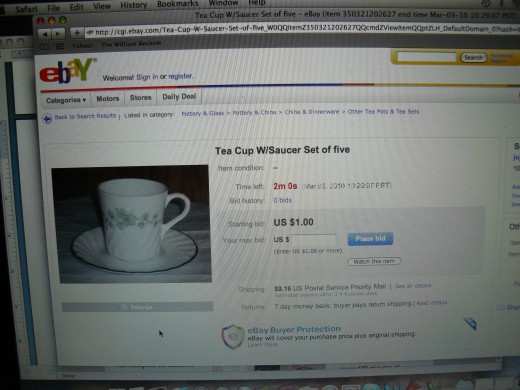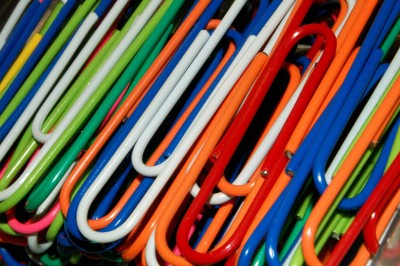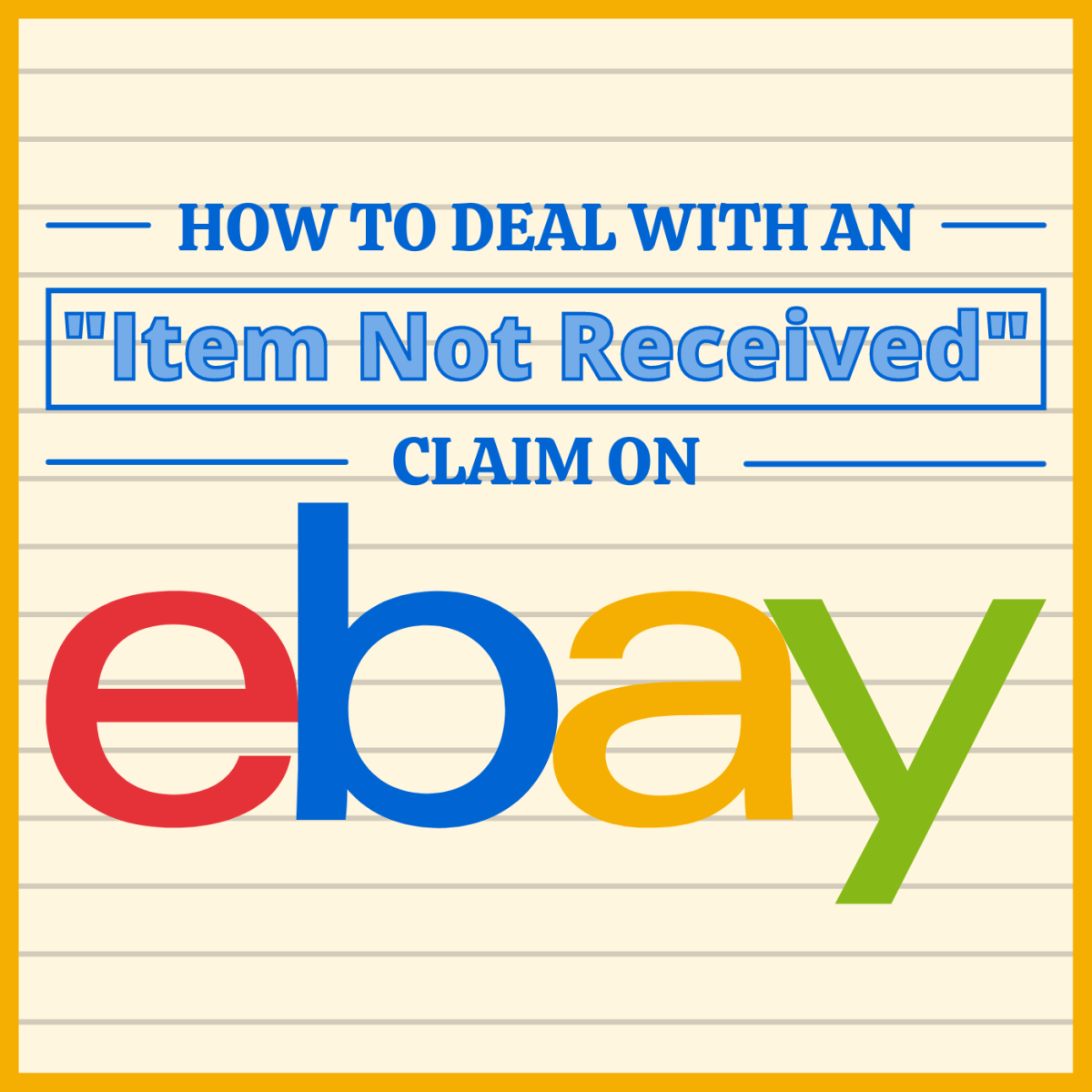The 3 Biggest Mistakes EBAY Sellers Make

Ebay is the largest worldwide shopping mall. It never sleeps, it's open holidays. You can buy just about anything, any time. That means you can sell just about anything, too.
So why is your Ebay store struggling?
Consider where and how to list an item. Consider unprofessional statements in your listings. Consider how timely you leave feedback. These are the 3 biggest mistakes a would-be decent Ebay seller can make.


1. – Poor Title, Poor Description, Wrong Category
Mistake numero uno on Ebay is to list your item so that people looking for it, can’t find it.
Title -
Starting with the title, you need to make sure your listing will be seen by searchers that want your item.
Mistake Title: Gorgeous Yellow Blouse, WOW!! Must See!! Beautiful!! Barely ever even worn!
The only way that item is going to be picked up by the search engine is if someone is searching for a “yellow” blouse. That’s it.
You only get so many characters for your title. Wasting them on terms no one will ever use in a search like “WOW!!” or “Beautiful” is a mistake. Instead, use that precious space to make sure your item gets grabbed by people searching for it.
With nearly 4 million items available under “Women’s Clothing” at any given time, you have to make your listing available to buyers that seek it. “WOW!!” does not get your item noticed, it only makes you miss out on being displayed.
Successful Title: Yellow Silk Tunic Blouse Shirt ¾ Sleeve Embroidered Sweetheart Neckline, XL
This title, for the same exact item, will be picked up by searches for sweetheart neckline, silk, ¾ sleeve, xl, tunic, and yellow. Approximately 6 -8 times as many people will look at this listing as opposed to the one that offered no information and therefore wasn’t included in search engine results.


Description –
Less people set their search to include description, so the title is definitely the most important. But the description follows. Not offering much of a description takes away from the appeal. If a bidder has to email you all their questions, they may just move on to the same listing from someone else offering all information upfront.
Here’s a great example of what the follow up description should be for the example item:
“All stitching in tact, no fading, no tears, no stains, hand wash or dry clean only, this item comes from a smoke free or pet free home, only lightly used – looks almost new, natural fibers, stitching is dark blue on the light yellow silk fabric, length is 29 inches, bust is 46 inches. Made in USA, by CHF Designs.”
Not including this kind of information, or any information at all, will cost you bids. With 4 million other items to look at under the same category, shoppers may not want to take the time to look, or ask you questions to teach you what you should have told them. They’re more likely to just move on.
Categories –
With so much to choose from, there are ebayers that shop certain “boards” or categories. For example, someone that collects Lionel trains may only look at the “Lionel” board. Listing your Lionel train in the wrong place may cost you views and bids. A simple search for “Lionel Train” produces almost 5000 hits. Take a moment to open some of them and see where they are listed. Under Toys & Hobbies there is a section just for Trains. Under that, there is a section for “0 Scale.” And under that board, there is a Lionel board, which is further broken down into decade groupings.
That was about 2 minutes of research. That’s all it takes. If you have something to sell, take a moment to see where people on Ebay go for that item. Sticking that train in Christmas, Home Décor, or “Miscellaneous” is the difference between whether a collector will find your listing or not.







2 - Unprofessional Statements
The next biggest mistake ebay sellers can make is to make themselves sound unprofessional, or worse. The seller that adds $1 or $2 for “handling charges” for example, loses out on a lot of bids, and it’s not because bidders were unwilling to pay the final dollar amount. It’s because a handling charge reflects badly.
In any business there is a bottom dollar. There's a certain amount of money the seller needs to collect to make a living. Buyers aren’t arguing that.
Say you’re selling a McCoy vase on Ebay. Your expenses need to be covered. They include a list something like this:
Cost of vase - $10 at estate sale
Cost of electricity, internet access, digital camera, computer, gas and travel, and other office overhead, all breaks down to: about $1 per item
Cost of packing peanuts, bubble wrap, labels and shipping supplies - $2
Cost of business on Ebay and Paypal - $2
Profit you need to keep doing this – $5
This list means your opening bid on this item should be $20.
Making your opening bid $18 and then charging the $2 at the end of the auction looks deceptive and tricky to the buyer.
It also looks like you can’t figure out how to manage your business and set a correct opening bid amount. It’s as unprofessional as if you set your opening bid at $18 and then at the end of the listing you write – “I will be adding a $2 surcharge for my electricity and internet and office equipment overhead.” Any bidder would look at that and think, what the hell is wrong with this moron? Why do I need to hear about one of the items from his overhead like that?
Say you walk into Staples and pick out a printer from the models set up on the showroom floor. The salesperson goes into the back and gets it for you and brings it to the register for you. Imagine the cashier says to you, "That'll be $79, plus tax, plus $2 handling." Imagine they single out any cost at all at the end of the transaction. "Plus $2 for the bag," or "Plus $2 for our electricity."
Ebay bidders won't have a problem with the opening bid of $20 for a cool McCoy vase. That is, if it's presented in an upfront, professional and honest way.
Many people feel the "handling fee" is your way of cheating Ebay out of it’s proper commission. You could technically still get your $20 bottom dollar by setting your opening bid for the McCoy vase at $1 and charging a $19 handling fee to avoid paying Ebay commissions on the final sale price. However, Ebay has rules against that, and they will catch up to you. But before they do, bidders will see how you cheat Ebay, and they will assume you’re trying to cheat them too.
Since Ebay has revamped its feedback system to reflect separately how different aspects of the sale went, one of which is how reasonable the shipping charges were, many sellers got a real awakening on the whole handling charge nonsense. So this isn’t the problem it once was.
Shipping charges should be the actual shipping charge. Period.








The Seller’s Policy
Part of the ebay appeal for both sellers and buyers, is the feel of doing business at a yard sale or with a small Mom and Pop Shop. Some people just don’t want to go to Walmart or Sam’s Club. They want to go to that old fashioned corner store, or the flea market. They want to feel a little more intimate about their shopping experiences. Despite Ebay's millions of sellers this is still a feeling that has been maintained.
And it’s not just buyers. There are sellers that want to hear where you used their grandmother’s rocking chair, or how you’ve been searching for this piece of your antique china pattern for years. That’s not to say these people aren’t still business savvy and professional. It’s just to point out that a good majority of ebay is looking for a certain type of experience.
If your rules and regulations are longer on your listing than the description of your item, you’re losing bids.
Stating “Non paying bidders will be reported!” rubs a lot of people wrong. Obviously, if you have a non-paying bidder, you’re going to report them. You don’t need to state that. It’s like walking into a store and seeing a big sign that says, “Shoplifters will be prosecuted!” Really? Does that need to be said? When you walk into Macys do you see a sign like that? No, because Macys is conducting business in a professional manner, and they don’t make mistakes like stating the obvious. When you walk into a yard sale do you see a sign that says that? No, because it’s not necessary, and it gives a bad uninviting feeling. You only see a sign like that in a small store where the owner is off-putting.
What’s worse than stating the obvious, is stating the illegal. Seriously, there are ridiculous Seller’s Policies that state things like, “Once items leave my hands they are NOT my responsibility. I am not responsible for any damage the post office does!”
Just because you state it in your seller’s policy, doesn’t make it so. Your policies do not trump the law. Legally it is the seller’s obligation to get the item to the buyer. If you order from JC Penney and the item breaks in shipping, JCP is obligated to make good. Your sale is no different. Making an illegal claim such as you will not be held responsible if the item is damaged in shipping, definitely lets would-be buyers know that you have no idea what you're doing, or that you're a crook.
Ebay had to put an end to seller's being allowed to make insurance "optional" as part of this no-insurance seller-scam. There were too many sellers that used the option to bully buyers into thinking they were just SOL if an uninsured item was lost or broken.
Legally this falls under unilateral contracts. A “seller’s policy” although accepted by the bidder upon bidding, does not provide for liability. Therefore, legally, the seller’s policy has no value and can not be enforced.
Most buyers know the law from watching court shows on TV. Any Ebay seller defendant on any television court show that refused to pay when an item was lost or broken in shipping has been ruled against in front of millions of viewers, bringing the correct information into the living room. Additionally, Ebay buyers know from experience through filing claims with Paypal or any credit card company, that a full refund is awarded to them because the seller had no legal ground to withhold their refund.
Even though a buyer may realize your seller’s policy is unenforceable, illegal or just plain ignorant, they will most likely choose not to do business with you. They have millions of legal and intelligent listings to choose from.
Now that you know what not to put in your seller’s policy, consider what you do need to include.
Basically, nothing.
Ebay’s rules are all pretty clear. The seller’s listing format includes just about all the information a buyer should need. Bidders know there’s a feedback system. They know you aren’t going to ship until they’ve paid. People can see under payment methods what forms you accept. They can see how much shipping is, and if they can get combined shipping on multiple items. They can see your return policy. They can see where you’re willing to ship. Nothing that used to be part of a necessary "policy" exists anymore. Ebay’s got you covered.
You need to spend real time on your actual item description. The only other things you need to include are the things that are not visible any place else. And those things should be worded professionally.
A couple lines inside your item description section might read like this:
Although our dogs are not allowed in the office where we keep our Ebay business, it is possible that you could find a dog hair on this blouse. We do our best to keep everything super-clean, but if you have a dog allergy, please be aware of this before you bid. Thanks!
Or
We only ship on Fridays. After you’ve paid for your win, your item will be shipped the following Friday.



3 - Feedback
The third biggest mistake ebay sellers make is probably the dumbest. Sellers should leave positive feedback for buyers as quickly as possible, either immediately after payment is received, or immediately after receiving the buyer's positive feedback. It ends the transaction on a "Come again!" invitation that will be considered the next time the buyer makes a purchase.
Seller's that don't leave feedback lose much more business than they realize. Many buyers save their favorite sellers, or buy repeatedly from the same reliable seller. When they get an item and the transaction was good, they will often go right back online to that seller's items for sale to see if there are more items they want. But they will not be buying more if they haven't received their feedback.
The feedback system is what launched Ebay into public favor. Buyers could see exactly what other's prior experiences have been with a given seller. You can't even get that kind of information in person at a retail shop.
The person that doesn't care about Feedback is not a real Ebayer. A real Ebay shopper spends time on the feedback they leave for sellers, and cares a great deal about the feedback they've earned in return. If they have to wait for no reason, or worse yet have to ask to receive their feedback, I can almost guarantee that seller has lost additional purchases.
It's unprofessional and a little insulting on the seller's part. And it's just an asinine mistake. It takes seconds to knock out positive feedback. It costs nothing, and it closes the transaction with a smile. This is where repeat business is solidified.
Not leaving a buyer their due feedback is the same as if they walked into your shop, bought something, paid, and walking out they turned to you and said, "Thank you! This was great!" and you completely ignored them. Didn't look up, didn't say thank you, just acted like you couldn't care less.
Obviously, no customer that is ignored or insulted like that is going to return.








